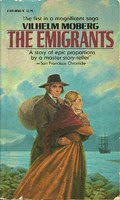This increasing lack of sunlight and rise in melatonin is known to cause depression and lethargy. While most people talk about how cold Nordic winters are, I am told the greatest difficulty is in learning how to overcome the great darkness. Let's see how Cody is adapting.
Hey Cody, how's it going now that the weather is colder and the days are shorter?
Cody: I have been sleeping way too much during the past three months. -- It was officially three months last Tuesday since I arrived in Sweden. -- I don't know if I have been sleeping so much because of the lack of sun, doing exhausting things all day, or just being a teenager, but it has been extremely difficult to get up now. I've started setting multiple alarms in order to get up.
Leslie: You've experienced a lot of new things recently and that's bound to make you tired. Do people use sun lamps to combat SAD (seasonal affective disorder) or take vitamin D supplements?
Cody: I haven't heard of anyone using sun lamps or taking vitamin D pills, but maybe up in the far north they do.
Leslie: I read an article that describes how they added special UV bulbs at bus stops in Umeå to simulate sunlight. They call it light therapy. Are there any special efforts being made to account for the increased darkness in Örnsköldsvik?
Cody: Right now the city has put up Christmas lights on nearly every street so that helps keep it light out.
Leslie: What would you say is the most difficult thing about the darkness?
 Cody: I think the thing most affected by the darkness is my hanging out with friends. Before it wouldn't be uncommon to hang out with my friends after school, but now it's so dark at 16:00 that you can't see your hand in front of your face without street lights.
Cody: I think the thing most affected by the darkness is my hanging out with friends. Before it wouldn't be uncommon to hang out with my friends after school, but now it's so dark at 16:00 that you can't see your hand in front of your face without street lights.Leslie: Wow. I did not realize it gets that dark. Is that degree of darkness a safety issue for pedestrians?
Cody: Everybody seems to wear reflectors here. Even I have started to wear them now. I have two. One goes around my arm. The other goes on my backpack. It's supposed to start getting light longer on the 21st of December. Everything is longer after that.
 Leslie: Yes, the winter solstice is less than one month away. Thanks, Cody. I hear November is the toughest month to endure.
Leslie: Yes, the winter solstice is less than one month away. Thanks, Cody. I hear November is the toughest month to endure.Here are some tips I have found online that are said to help make the darker months easier to get through.
Exercise
Keep active. The most often cited tip for enduring dark and cold winters is to keep active. Cody has joined a gym and works out three times a week with some of his friends from school.
Create Light
Everywhere, in all kinds of ways, using candles, lamps, and fire. Maia, an American woman living in Sweden, published an interesting and in-depth article here about how light is created in Stockholm. She, like Cody, mentions Christmas decorations as being a good source of light.
The snow is said to reflect the street lights and make everything brighter. Rather than looking at the snow as something difficult to endure, a lot of people look forward to snow and see it as something positive.
And, when all else fails …
Plan a Vacation
Stay tuned to the "Cody in Sweden" series to find out just what he has planned for late February 2015. It might look a little something like this …
 |
| Photo from Lonely Planet. |












